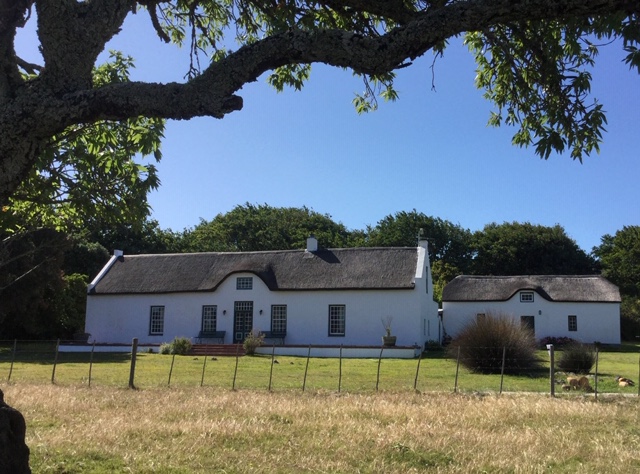SITE VISIT MONDAY 18 February 2019, arrival 10.30 am
GOEDVERTROUW IN A NUTSHELL
OUR HOSTS- DANIE & MAY DEVILLIERS
The right to use the land (where the current farm Goedvertrouw is located) for the grazing of cattle (“weiregte”) was given to Pieter Swart by the VOC authorities in 1729. This piece of land was at the time described as “over de Uijle Craals Rivier”. Swart who was granted the grazing rights in the course of time became the tenant of the loan farm with the same name. When he died his widow became the tenant until she died in 1752. Swart was obviously not the first occupant of the land. The word “craal” in the name may indicate that there was a Khoi settlement located on the land which is made more probable by the fact that the river becomes wide resulting in excellent grazing for stock.
After the almost 25 years that the Swart family were the tenants, there were six other tenants before the turn of the century. In this period the name “Goedvertrouwen” started to appear in the documentation that was obtained in the Cape Archives. In 1810 an interesting person, with the name of Samson Dyers, became the tenant of the loan farm. Dyers was a Polynesian seaman who deserted from his ship when it called in Cape Town. He was hired by a Cape firm to harvest seals on the island off Kleinbaai, today called Dyer Island.
It is not clear when the first buildings that currently still exist on Goedvertrouw were constructed. It is however certain that a house existed before 1818 on the spot where the main farm house currently is located. A map dated 1818 was found in the Cape Archives, the year that the mapping of loan farms commenced in preperation of them being granted to the occupiers. The map was drawn by Mr Hopley, the surveyor appointed by the new British government, located in Caledon at the time.
Our guess is that the main house was constructed between 1813 and 1818 by either Lucas Maree or Petrus Robert de Villiers, tenants during that period. The cottage adjacent to the main house was most likely built earlier. The building material used in the construction was lime stone and clay/lime as bonding material.
In 1842 the first Englishman John Metcalf bought the farm for £500. He wrote to his father in England about the property that he purchased and included a drawing of the inside of the main house which clearly resembles the front part of the current house. He very interestingly discusses the surroundings and his neighbours who, at that stage, were all “boere”. These letters survived and is currently in the hands of his brother’s descendants, the current Metcalf family in South Africa.
From 1850 the farm was occupied by Jacob Isak de Villiers, known as Jacob Osboer. His descendants, my current neighbour, still owns and farms on a part of the original Goedvertrouw.
GOEDVERTROUW /well trusted

